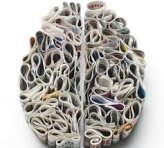Newsletter issue 12-2015
28th December 2015
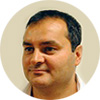
Kamil Uludag - CSTO
From mid October 2015 on, the Shareholders and Supervisory Board of Scannexus have appointed Kâmil Uludaĝ as Chief Science and Technology Officer (CSTO).
The CSTO is responsible for scientific content and research & development strategy of Scannexus, research in safety and safety review issues (acting as Safety Officer of Scannexus) and, last but not least, for the contribution to Ultra-High-Field training programs.
Kâmil Uludaĝ is Associate Professor in the Faculty of Psychology & Neuroscience continuing his work on the basis of fMRI utilizing the new Ultra-High Field human MRI scanners (7 and 9.4 Tesla) got recently awarded a VIDI grant on high-resolution fMRI. In addition, he works on quantitative anatomical MRI (ASL, T1, T2*, SWI) and applies these approaches on post mortem brains, healthy subjects and patients. He recently edited a textbook “functional MRI: from Nuclear Spins to Brain Functions” (Publisher: Springer).
SWOL projects
Brain plasticity and functional recovery in low-functioning stroke patients trained with a dynamic hand orthosis: a MRI pilot study.
For patients who suffer from a moderate or severe paresis of the upper extremity caused by a stroke, it is often difficult to participate in task-oriented interventions, as they lack the capacity for voluntary movement in their paretic arm and hand. Especially the opening of the hand, involving extension of the fingers, is difficult. Longitudinal studies have found that early return of voluntary wrist and finger extension is a prerequisite for regaining dexterity after stroke. Recently, dynamic hand-extension orthoses have become available that may assist in wrist and finger extension. This unlocks new training regimen for stroke patients with a very low arm-hand function, and also may facilitate intensive self-practice during patients’ own daily pursuits.
In the course of rehabilitation training, movement synergies of the hand have to be relearned at the cortical level to regain arm-hand motor control. Dynamic hand-extension orthoses may possibly aid this process.
Based on a grant from the Brains Unlimited Pioneer Fund we will perform a pilot study to fine-tune the measurement protocols for a larger longitudinal cohort study in chronic unilateral stroke patients with a low functional arm-hand. In the latter study we will investigate the changes in structural and functional brain measures and functional outcome measures that are induced by wearing a dynamic hand-extension orthosis (Saebo Glove, see figure 1), both instantly as well as after six weeks of orthosis-supported arm-hand rehabilitation training. Participants will be scanned in the 7T scanner of the Scannexus facility. During the scan sessions, participants have to perform several tasks with and without the glove, i.e. a pretend-grasping task, a button-press task, and a somatosensory finger mapping task.
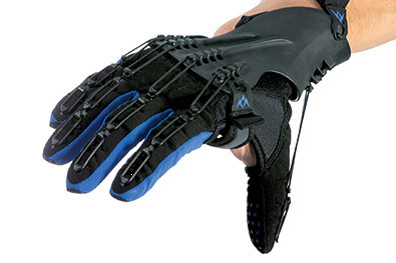
Saebo glove (Saebo Inc., Charlotte, NC, USA)
Insight brain mechanisms underlying the training effects and the interaction between changes in task performance and changes in the central nervous system (CNS) could help optimize and fine-tune dynamic-orthosis-supported rehabilitation treatment. In addition, neuroimaging techniques could improve treatment assignment by identifying the initial pattern of brain activation that is predictive of success for a particular treatment in patients with a very low arm-hand function caused by a stroke.
The research team: Dr. A. Kaas, Dr. M. Rosenke, Dr. J. Eck, Prof dr. R. Goebel (FPN / CN), Dr. H. Bouwsema, J.A. Franck, Dr. H.A.M. Seelen (FHML & Adelante rehabilitation center)
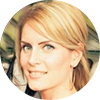
Introduction Maxime Graus, office manager
Through this newsletter I would like to introduce myself to you and say ‘hello’. My name is Maxime Graus born –34 years ago - and raised in Maastricht. I’m a new member of the Scannexus team and I fulfill the role of office manager.
I provide general management support, accounting support, HR
support and marketing and communications support to the management team of Scannexus. My previous work experience and my personality have brought me to where I am today. I am an eager learner looking forward to improve my overall knowledge and skills.
Medical research and development is very important for our society. It’s great to be able to contribute by means of my supporting role in groundbreaking scientific research and development. I’m enthusiastic about joining the Scannexus team and I’m looking forward to meet everyone who has a connection with Scannexus.
The Strategic Scientific Advisory Board (SSAB) and Safety Review Board (SRB)
Recently we have installed, in addition to the statutory Shareholders and Supervisory Board, a Strategic Scientific Advisory Board, consisting of members of two University faculties FPN and FHML.
The main advisory roles that we foresee and defined for this SSAB are:
- Define, monitor and update the overall mid term and long term goals and strategies of the broader Brains Unlimited project, of which Scannexus is one of the main building blocks.
- Where necessary optimize, improve and intensify the interaction, cooperation and collaboration between (researchers from) FPN, FHML, MUMC and Scannexus.
- Consider the scientific research and development strategy of Scannexus itself, also in relation to (future) internal and third party use of the facilities.
- Consider, evaluate and advise on future investment requirements (short term, mid term and long term) in the facilities, hardware, software, services and expertise.
- Consider the (future) position of the facility within a broader Brightlands Health Campus and Maastricht “Imaging Valley” together with other facilities like ET, M4I, MUMC MRI Center/ Radiology azM, other regional (and beyond) MRI capacity.
- Explore a new and broader educational/consultancy strategy for Scannexus.
The members of the board are both deans of FPN and FHML, Bernadette Jansma and Albert Scherpbier and colleague researchers from FPN and FHML/MUMC, Elia Formisano, Joachim Wildberger and Rainer Goebel. In the coming months additional members will be invited to join the SSAB. We will keep you informed.
The Safety Review Board (SRB)
In general, there will be unified procedures and settings for the standard use of the scanners (also under the ISO certification). Specific requests/modifications can be requested and will be considered for specific research applications and developments and for clinical research. In these cases the SRB is to be consulted and its approval is needed. The SRB is to be installed by the SSAB. The Chief Science and Technology Officer chairs the SRB and the Senior Staff Scientist is an advisor to this board. The SRB decides on safety issues.
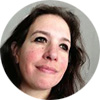
Introduction Verena Smits, MRI lab assistant/administrator
My name is Verena Smits. I am 40 years of age and live in Maastricht together with my partner and three children. I have accepted Scannexus offer of employment as a MRI lab assistant and administrator.
My main duties will be to provide administrative support for the scanner operations and coordinate information flow towards users/customers. For many of you I will be your first daily point of contact.
Originally, I have an education in Arts and Culture Science and Psychology, but for the last couple of years I was employed as a workforce management specialist at Vodafone. I was responsible for the support of the daily management processes of customer management to achieve business service level objectives and maximize efficiency and occupancy. Specifically, generate forecasts and schedules, ensuring staffing was aligned to meet customer demands, analyzing and reporting data and trends and project management.
Although I enjoyed my work, I did miss the scientific environment I encountered during my studies. It is this environment at Scannexus that attracted me. In my supportive role I hope to be of great value to Scannexus and at the same time learn more about MRI-scanners and the research being done here. My previous experiences and knowledge I hope to be able to reuse in my new role at Scannexus. I hope that I can help to realize happy customers.
Mock Scanner Project
Using Mock scanner for preparing patients, from the azM, for their MRI-examination.
The majority of patients will be (young) children. These will be accompanied by their child live specialists from the MUMC+. It’s important to children when treatment or research is needed, that they are well prepared. That the child knows what to expect and what is going to happen. The preparation consists of education and practical training. That they can see and feel the scanner before the real step. In addition, the preparation is focused on teaching coping strategies (what can you do to make everything run smoothly, how to deal with difficult situations). The preparation is individually tailored to the cognitive and social-emotional level of the child. The children are 2 ½ to 3 years old.
Thanks to good preparation and an assessment of whether this is sufficient (when the scan is successful, positive experience for the child) assisting a child in a good way during the scanning, you avoid an unpleasant or traumatic experience. The actual scanning will run smoothly, scanning and specialist time will be used optimally. For the parents and the child, this is also much more pleasant.
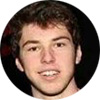
Introduction Lucas Vanparijs, intern
Hi, I'm Lucas. I'm a 2nd year bachelor student at the Department of Knowledge Engineering (DKE) within Maastricht University.
Normally we, the nerds of DKE, work on projects in our faculty throughout the year but I've been selected to work on projects at Scannexus instead of the University. Great!
In my time at Scannexus, I hope to gain some valuable work experience and skills that will be useful for my post university endeavors. The goal of my job is to optimize and speed up the workflow of the 9.4T scanner, more specifically the software running the scanner. It's quite a daunting task since my knowledge of MRI is limited... very limited, but with the help of colleagues at Scannexus I'm sure the workflow will soon be buttery smooth for all to enjoy.
Cheers to all and have a nice day!
Announcement Costumer Survey
In the coming weeks all our customers / users will get an invitation to participate in our yearly customer survey. This invitation will be sent to you through mail and the survey will only require a couple of minutes but is - for us and for you - very important.
So we sincerely hope that you will be willing to spend a few minutes of your time to give us your feedback and comments, but also your wishes, ambitions and demands for our mutual future. With your input we hope to continuously improve our services and facilities leading to great research and development even more happy customers!
Thanks in advance.
We would like to use this moment to thank you for the pleasant cooperation, and we wish you
Merry Christmas and a Happy New Year.
< Back to overview News



